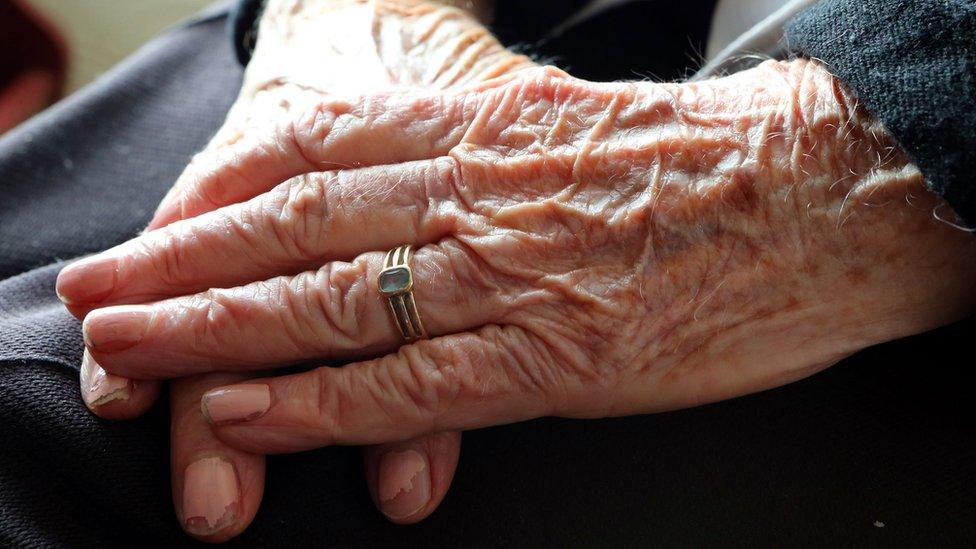Life expectancy: Is the party over?
- Published

The big rise in life expectancy seen in the past few decades may be easing off, official figures suggest.
Higher than expected death rates among older people in 2012 and 2013 have reined in projections from the Office for National Statistics.
The ONS said it could not tell yet if those recent higher death rates were a blip or not.
But increasing obesity or antibiotic resistance might slow or even halt the trend to improving life expectancy.
"There continues to be much debate amongst demographers as to whether life expectancy will continue to increase at current rates indefinitely or whether lifestyle factors... may cause the rate of mortality improvement to stop or even decline," the ONS said.
Blip or not?
Because of the very recent rise in mortality rates among the elderly, the latest medium and long-term life expectancy projections from the ONS are not quite as high as when they were last published in 2013.
Then, based on 2012 data, it was suggested that the average life expectancy of 100 for women, born in the whole of the UK (apart from Scotland), would arrive in 2062, which was two years earlier than now thought.
The 2012 data also suggested a slightly higher life expectancy for women and men who will be born in 25 years' time.
Meanwhile, the ONS reported last month that in the winter of 2014, there had been nearly 44,000 more deaths in England and Wales than had been expected.
Most of these were among the over-75s and were blamed on the available flu vaccine failing to sufficiently combat that year's flu virus.
An ONS spokeswoman pointed out that long-term trends improving mortality and life expectancy were very strong, but had always been subject to occasional short-term fluctuations.
"Last year, flu vaccinations were not as successful. This may be a temporary phenomenon, but we don't yet know if this is a blip in the upward long-term trend in mortality," she said.
'Treat with caution'
Life expectancy at birth, and also at age 65 (taken as a proxy for retirement), has been increasing steadily for the past four decades.
The average annual improvement in mortality rates has been 1.9% for men and 1.5% for women, due to factors such as a reduction in the prevalence of smoking, improved medical care for the elderly and the ill, and the decline of dangerous jobs for men in heavy industry.
That means, according to the latest projections, external, that someone born in 2014 is now expected to live to 79 (for a man) or 83 (for a woman).
Someone born in 2039 is estimated to live several years longer: to 84 years (men) and 87 years (women), if there are no further improvements in mortality rates.
But if further improvements in mortality rates are factored in, life expectancy at birth for those born in 2039 will shoot up by about 10 years, to 94 years for men and 97 years for women.
Looking even further ahead, a woman born in England in 2064 is now projected by the ONS to live to 100, to 99 in Wales and Northern Ireland, and to 98 in Scotland.
The ONS admitted that these longer-term projections were "uncertain" and "should be treated with caution".
- Published9 December 2015

- Published25 November 2015

- Published30 April 2015
